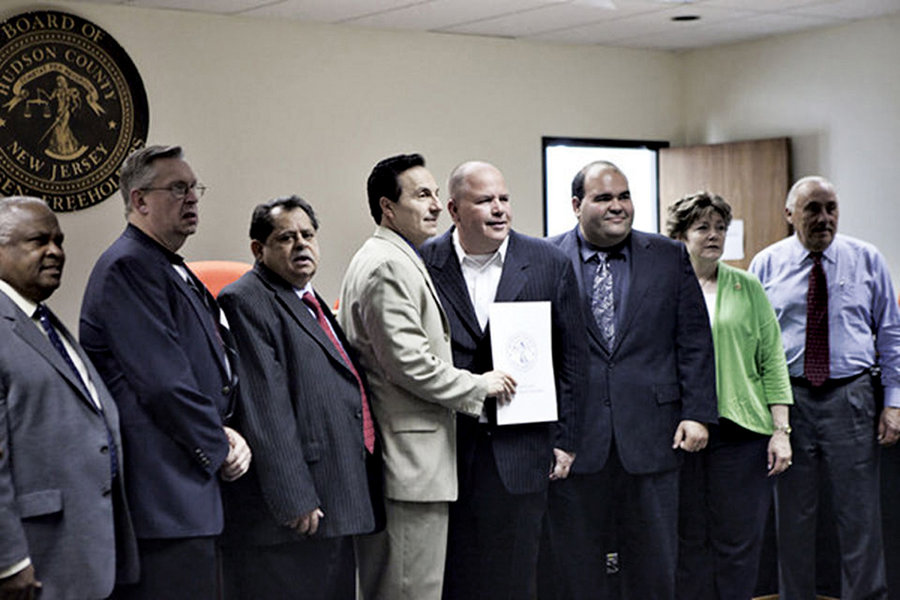When Joamelly Arteaga started to get nose bleeds as a young girl, nobody suspected she was suffering from lupus.
“They didn’t know what she had,” said her father, Armando Hernandez, a resident of West New York, who after the his daughter’s death two years ago established the Lupus Y Latinos Foundation in Union City to help raise awareness. “Lupus is called the ‘Great Imitator’ because its symptoms mimic other diseases.”
By definition, lupus is an acute and chronic autoimmune disease. The immune system becomes unbalanced, causing inflammation and tissue damage to nearly any organ in the body – including the lungs, kidneys, heart, brain, even the skin.
Symptoms are so varied they are often mistaken for symptoms of other diseases: extreme fatigue, headaches, painful or swollen joints, fever, anemia, swelling, pain in the chest when breathing deeply, a butterfly rash across cheeks and nose, sensitively to sunlight, hair loss, abnormal blood clotting, fingers turning white or blue when cold, and mouth or nose ulcers.
“You’re constantly up and down with conditions changing from minute to minute.” — Armando Hernandez
____________
Honoring those who help
Although official Lupus Awareness Day isn’t until May 10, The Lupus Y Latinos Foundation hosts its third annual Lupus Awareness event in West New York at El Marinero Grill, 759 Farragut Place, on Friday, May 1 at 7 p.m.
This year the foundation will honor Assemblywoman Angelica Jimenez, a member of the Health and Senior Services Committee. The foundation will also pay special tribute to doctors Dr. Michael Guma, and Dr. Louise Albornoz which combined have over 60 years experience in the field of Rheumatology.
“Besides Dr. Guma, Dr. Albornoz, of Palisades General Hospital is the only Rheumatology consultant and one of only two Rheumatologists in Northern New Jersey who speaks Spanish,” Hernandez said.
This is important because Lupus is not an equal opportunity disease.
“It disproportionably discriminates against women, minorities and the poor,” he said “Lupus is two to three times more common among African Americans, Hispanics, Asians and Native Americans.”
Unfortunately, his daughter was one of the disease’s victims.
A typical girl
Diagnosed finally in 2009 with systemic Lupus, Arteaga was a typical 22-year-old when she died three years later.
“You can describe her as bubbly, energetic, friend and outgoing,” Hernandez said. “She also had a contagious smile and extraordinary energy.”
In May 2012, she graduated from Felician College with a degree in Early Childhood Education.
“After graduating, her health began to deteriorate,” Hernandez said. “She started to experience flares more often where symptoms would appear for a short period and then would disappear, and her kidney functions worsened.”
Hernandez compared it to an elevator ride.
“You’re constantly up and down with conditions changing from minute to minute,” he said. It gives you a false hope that it will come to a stop.”
Arteaga died in July 2012.
Ignorance is not bliss
Raising awareness of the disease is important because the people most likely to get it, know nothing about it.
A recent survey of adults concluded that nearly three out of four Hispanics and more than half of African Americans say they have either never heard of lupus or know little or nothing about the disease. More than 70 percent of Americans between 18 and 34 – the age group at the greatest risk for the disease – know nothing about it beyond its name.
“Sadly, one respondent answered that it was a computer software program,” Hernandez said.
Fortunately, things have gotten better recently. In 2011, the Federal Drug Administration approved the first drug for treatment of lupus. Prior to that, most patients received only anti-inflammatory drugs, Hernandez said.
The survival rate has also improved. In 1948, nearly half of those suffering from Lupus didn’t survive to age 50.
Today, Hernandez said, the five-year survival rate is 90 percent, and those living 20 years or more with the disease is about 80 percent.
He said the early the disease is detected, the better the survival rate. This, of course, means educating the public.
Groups such as Daddy’s Sunshine – a Jersey City-based group honored recently by the Hudson County Freeholders and the Jersey City Council – are joining The Lupus Y Latinos Foundation in trying to make the public aware of the disease.
Daddy’s Sunshine will hold its first Lupus Walk on Sunday, May 17 from 8 to 10 a.m. in Lincoln Park in Jersey City to raise funds and awareness to fight the disease.
The Lupus Y Latinos Foundation has also established a support troop for those suffering from Lupus, offering opportunities to share information, experiences and give encouragement to others.
The foundation is also giving to Lupus victims special umbrellas that protect from ultra violate rays of the sun, something that also impacts harshly on people suffering from Lupus.
“Is it estimated that 2 million people in the US suffer from Lupus, Hernandez said. “There are 16,000 new cases of Lupus diagnosed each year.”
Al Sullivan may be reached at asullivan@hudsonreporter.com.
